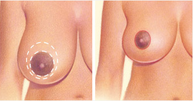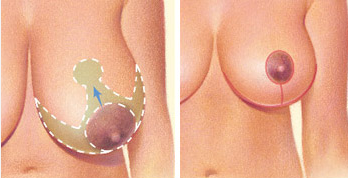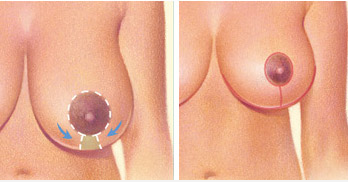Breast Reduction
Breast reduction surgery, (also known as reduction mammaplasty, or simply breast reduction) is a surgical procedure during which a patient undergoes the removal of excess breast fat, tissue, and extra skin to achieve a proper breast size and loft that is proportionate to the body. A breast reduction can alleviate the common discomfort that is associated with over-sized breasts.
Some things to know before your breast reduction procedure - A successful procedure depends very much upon your honesty during the consultation with your surgeon. During the consultation phase of your treatment, you’ll be asked a series of questions about your health, lifestyle, and what your ideal appearance would be. During you consultation(s), be prepared to discuss:
Other things to expect from your surgeon:
Preparing for Breast Reduction Surgery - Before surgery, you may be asked to undertake some tasks such as the following:
Incision Types in Breast ReductionThe Big Day: The breast reduction procedure, what to expect?During breast reduction surgery, through an incision on, around, or near your breasts, the surgeon will remove the excess fat, glandular tissue and skin. There are cases, where excess fat may be removed through liposuction along with the excision procedures set out below. Specific surgical techniques may vary depending on your physiology, breast structure, reduction size desired, your personal preferences, and the advice of your surgeon.
For your comfort, medications are administered, during the breast reduction surgery. Your choices usually include either intravenous sedation or general anesthesia. Your doctor will let you know which one he recommends and would be best suited for you. Incision options include: a circular pattern around the areola; the incision lines that remain will be visible, permanent scars, although easily concealed beneath a swimsuit or bra. Second, a keyhole type pattern with an incision around the areola and down to the breast crease vertically. Finally, an anchor-shaped incision pattern, similar to an upside down “T”. After the initial incision, the nipple, which will stay secured to its original blood and nerve supply, is then repositioned. The areola is then trimmed, reducing its size, if necessary. The extra underlying breast tissue is then extracted, lifted, and molded. On occasion for excessively big breasts, the nipple and areola may need to be removed entirely and then transplanted to a higher position on the breast. The incisions are pulled together to reshape the new, more petite breast. Sutures are layed in deep in the tissue. This creates a support for the newly-shaped breast. Sutures, adhesives, and if needed, surgical tape are used to close the skin. The incision lines are permanent, but they will continuously fade as time goes on. Once your breast reduction surgery is finished, dressings and bandages will be used around the surgical area. A support bra can be used daily to keep swelling down and support the breasts as they heal. You may be directed to limit your physical activity for a few days or weeks. After a few weeks, you’ll be able to enjoy your new, improved body! Fill out the contact form below to schedule your cosmetic consultation. |
Medical Spa Treatments
Acne Acne Scarring Botox Chemical Peels Dermal Fillers Dermaplaning Excessive Sweating Laser Hair Reduction Lip Enhancement Microdermabrasion Microneedling Skin Care Products Skin Rejuvenation Skin Resurfacing Spider Vein Reduction Sun Damage Tattoo Removal Specials Surgical Procedures Arm Lift Body Lift Breast Augmentation Breast Lift Breast Reduction Brow Lift Ear Pinning Earlobe Repair Eyelid Rejuvenation Face Lift Fat Transfer Hand Surgery Hernia Repair Keloid Scar Lip Augmentation Liposuction Male Breast Reduction Mole Removal Mommy Makeover Neck Lift Rhinophyma Scar Revision Skin Cancer Thigh Lift Tummy Tuck Vaginal Rejuvenation |
ORLAND PARK PLASTIC SURGERY
Privacy Policy | Links | Location | Specials
© 2004-2024 Orland Park Plastic Surgery, S.C., all rights reserved • 708.873.9600





